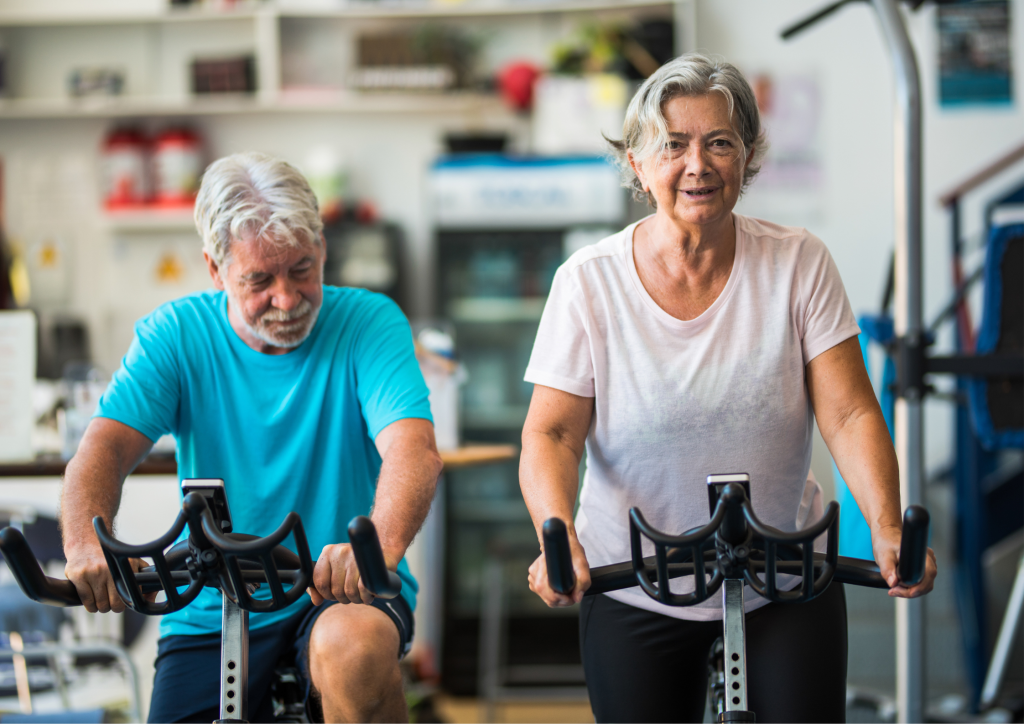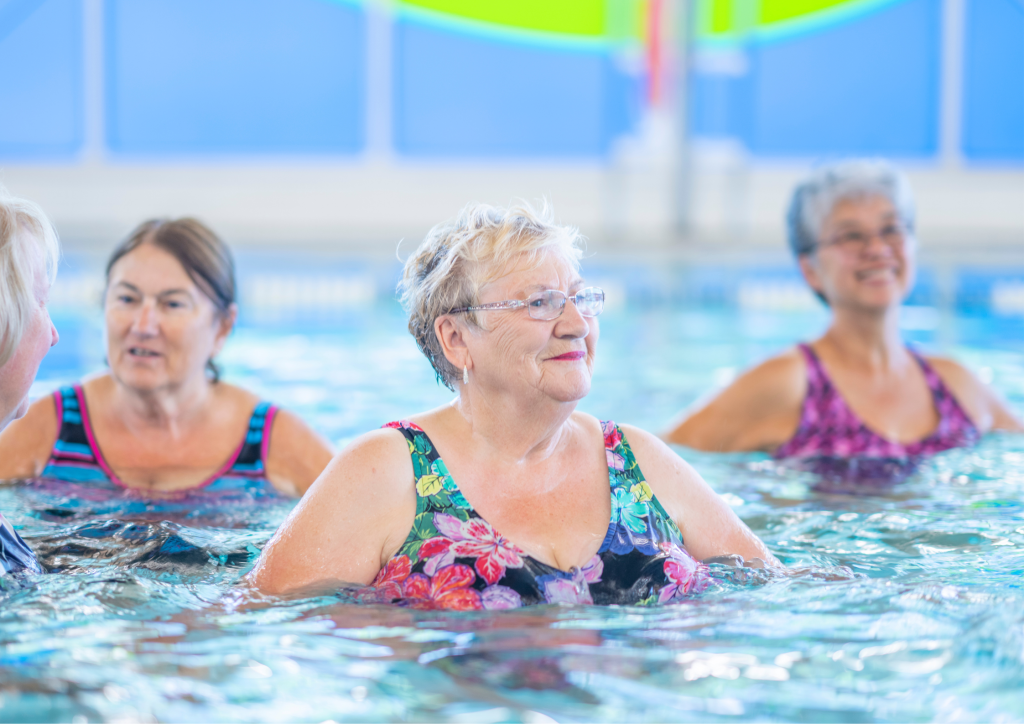Aging is an inevitable part of life, and as we grow older, our bodies naturally undergo various changes. One crucial aspect of healthy aging is maintaining strength and coordination. As we age, we become more susceptible to muscle loss, reduced flexibility, and diminished coordination, which can significantly impact our quality of life. However, with the right approach and lifestyle choices, it is possible to mitigate these effects and preserve physical function. This article will explore the importance of maintaining strength and coordination as we age and provide practical tips on how to achieve this goal.

Why is Maintaining Strength and Coordination Important?
Enhancing Independence
As we age, the risk of falls and injuries increases. Maintaining strength and coordination is vital in preventing such incidents. Strong muscles and good coordination help us maintain balance, stability, and control, reducing the likelihood of falls and enhancing our overall independence
Preserving Mobility
Muscle strength and coordination are fundamental for maintaining mobility and performing daily activities. By engaging in exercises that target strength and coordination, older adults can sustain their ability to walk, climb stairs, carry groceries, and engage in other physical tasks essential for independent living
Managing Chronic Conditions
Regular exercise that focuses on strength and coordination can be beneficial in managing chronic conditions commonly associated with aging, such as arthritis, osteoporosis, and cardiovascular diseases. Strong muscles support joint health, while coordination exercises improve cardiovascular function and blood circulation.
How to Maintain Strength and Coordination
Engage in Strength Training
Strength training exercises, such as lifting weights, using resistance bands, or performing bodyweight exercises, help build and maintain muscle mass. Aim for two to three sessions per week, targeting major muscle groups. Gradually increase the intensity and weight to challenge your muscles and promote growth.
Incorporate Balance and Coordination Exercises
To improve balance and coordination, include exercises that challenge your stability and body control. Tai Chi, yoga, and balance-focused workouts are excellent options. Additionally, activities like dancing, playing sports, or practicing martial arts can help enhance coordination and agility.
Prioritize Cardiovascular Fitness
Maintaining cardiovascular fitness is crucial for overall health and well-being. Engage in aerobic activities such as brisk walking, cycling, swimming, or using elliptical machines. Aim for at least 150 minutes of moderate-intensity aerobic exercise or 75 minutes of vigorous-intensity exercise each week, in addition to strength and coordination training.
Stay Active Throughout the Day
Incorporate physical activity into your daily routine by taking regular breaks to stretch, walk, or perform simple exercises. Avoid prolonged periods of sitting and make an effort to move regularly. Small lifestyle changes, like taking the stairs instead of the elevator or parking farther away from your destination, can make a significant difference.
Practice Flexibility and Stretching
Flexibility exercises help maintain joint mobility and range of motion. Incorporate stretching exercises into your routine, focusing on all major muscle groups. Yoga, Pilates, or simple stretching routines can enhance flexibility, reduce muscle stiffness, and improve coordination.
Seek Professional Guidance
Consulting a healthcare professional or a certified fitness trainer who specializes in working with older adults can provide valuable guidance and personalized exercise recommendations. They can help design a suitable exercise program based on your abilities, goals, and any specific health considerations.
1) Get Out There and Exercise Daily
Any form of exercise is always going to be better than no exercise at all. Just going for regular daily walks can work wonders and it also helps to maintain strength and coordination. For example, when you walk, you don’t just use the muscles in your legs. Your core is also engaged, as is most of the upper body, including the neck. If you walk in areas where the ground is not totally flat and there are a few obstacles, this will also help to maintain your coordination.
Swimming is awesome for low-impact exercising, as is cycling. You might even want to consider enlisting in some sort of aerobics class, as this will help with both coordination and strength training.

2) Exercise While Following Along To Online Videos
If you go onto a site such as YouTube and perform a search that targets exercise routines and videos for older people, you’ll discover there are loads of videos that you can follow along with to maintain your strength, fitness, and coordination.
The great thing about exercise videos is that you can pause them any time you need a break, or replay sections until you get the hang of doing the exercise routine. Most importantly, it’s often a lot of fun as well.
3) Play a Sport
Your ability to play a sport will largely be age-dependent as well as what type of physical condition you currently are in. One sport or pastime that’s excellent for maintaining strength and fitness is table tennis, and you don’t necessarily have to be all that young to play. Not only is the sport great for coordination, but also the reflexes, balance, flexibility, and cardiovascular fitness.
The great thing about sports and physical pastimes is that you rarely even realise you’re exercising. You’re far too focused on playing well or trying to win to really even think about the exercise you’re getting. Sometimes, working out in the gym and other mundane forms of exercise can be really boring and just plain hard work. Because there is no motive other than to exercise, that’s all you’ll be focused on. It’s totally different when you’re involved in a sport and doing something you really enjoy.

4) Strength Training Several Times a Week
Although focusing on strength training in the gym is decidedly less interesting than playing a fun sport, it’s always good to combine some strength training with everything else. You might also want to consider enlisting the help and guidance of a personal trainer.
If you do some strength training several times a week, it can make the world of difference. You may even want to do some free weights while training, as this will help to enhance your balance, technique and coordination.
If you are in doubt about what you’re capable of doing, consult with your doctor or fitness professional first before embarking on a strength training regime.
5) Set Fitness Goals
It’s always easier to achieve results if you create a plan and set goals for yourself. This applies to physical fitness as you age just as much as anything else in life. It doesn’t matter whether you’ve already started an exercise regime or not, anytime is a good time to start mapping out some goals and ways to achieve them.

6) Find An Exercise Buddy
If you team up with someone else in your approximate age bracket and set some exercise and fitness goals between you, you’ll find it’s going to be much easier to reach those targets. You’ll be able to motivate one another and keep each other on track. Exercise is also a lot more interesting when you’re doing it with someone else too.
It’s also advantageous to have another person with you when you’re exercising, particularly if you’re a senior. If you suffer an injury or have an accident while out and about getting exercise, you’ll have someone there to assist you or to call for help.

7) Start Slow and Build It Up
The greatest deterrent to doing exercise can be going out too hard and either suffering from intense muscle pain over the following days or injuring yourself when doing something too vigorously that your body is not used to.
No matter what exercise you are planning to do or what sport you choose to play to improve your strength, coordination and fitness in general, always start out slow and gentle and work your way up to more intense and vigorous exercise. Give your body a chance to get used to the physical activity one step at a time.
Maintaining strength and coordination as we age is crucial for preserving independence, mobility, and overall well-being. By incorporating regular strength training, balance and coordination exercises, cardiovascular activities, and flexibility routines into our daily lives, we can mitigate the effects of aging on our physical function. Remember to start slowly, listen to your body, and gradually progress as you build strength.
Sources:
8 Best Sports for Elderly People to Play
https://www.health.harvard.edu/blog/how-to-stay-strong-and-coordinated-as-you-age
https://www.helpguide.org/articles/healthy-living/exercise-and-fitness-as-you-age







